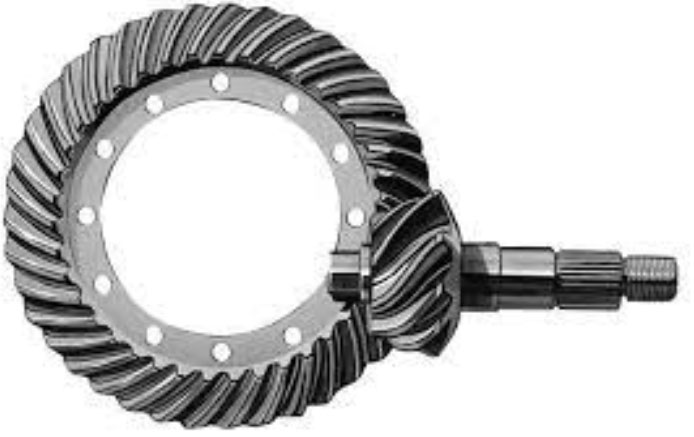Despite the disadvantages mentioned earlier, hypoid gears remain a popular choice in various applications due to their unique advantages. Apart from automotive differentials, hypoid gears can be found in other power transmission systems, such as heavy machinery, marine drives, and industrial gearboxes.

To further understand the role and application of hypoid gears, let’s consider some additional factors:
- Ground vs. unground gears: Hypoid gears can be manufactured with different levels of precision. Ground hypoid gears have a higher degree of accuracy in their tooth geometry, leading to better meshing and reduced noise and vibration. However, they are more expensive to produce. Unground hypoid gears, while less expensive, may have increased noise and vibration levels due to less precise tooth geometry.
- Gear ratio: Hypoid gear sets can be designed with a wide range of gear ratios, providing flexibility in power transmission and torque multiplication. This is particularly useful in automotive applications, where different gear ratios are required to accommodate varying vehicle specifications, driving conditions, and performance requirements.
- Mounting considerations: Hypoid gears can be mounted in various configurations, such as horizontally or vertically, to suit the requirements of the specific application. This flexibility allows designers to optimize the layout of power transmission systems for improved efficiency and compactness.
- Material selection: Hypoid gears can be made from a variety of materials, including steel, iron, and even plastics. The choice of material depends on factors such as strength requirements, weight constraints, cost, and environmental considerations.
- Heat treatment: Hypoid gears are often subjected to heat treatment processes, such as carburizing or nitriding, to improve their surface hardness and wear resistance. This ensures a longer service life and better performance under high-load conditions.
In conclusion, hypoid gears are a versatile and reliable choice for transmitting power between non-intersecting and non-parallel shafts, particularly in applications where high torque capacity, smooth operation, and compact design are crucial. Their unique characteristics and advantages make them an important component in various power transmission systems, from automotive differentials to heavy machinery and industrial gearboxes.
